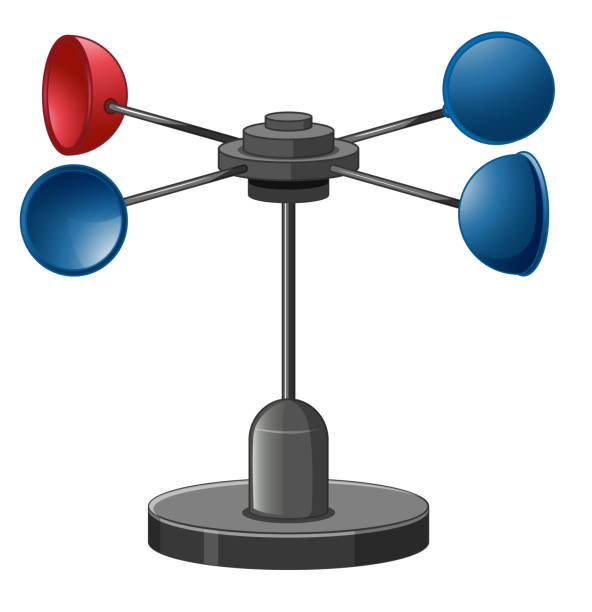Comprehending Different Kinds Of Anemometers for Various Applications
Comprehending Different Kinds Of Anemometers for Various Applications
Blog Article
Anemometers Unveiled: Comprehending Their Relevance in Ecological Tracking and Security Steps
The role of anemometers in environmental tracking and precaution is commonly taken too lightly, yet their relevance is undeniable. These instruments have a long background rooted in clinical questions and technical innovations, advancing to come to be important tools in different areas. From weather forecasting to aviation security, anemometers play an important role in providing exact information that notifies decision-making processes and boosts total security. Recognizing the intricacies of anemometers unveils a globe of vital insights that are basic to our understanding of the environment and the procedures we take to make certain security.
Background of Anemometers
The development of anemometers can be mapped back to the ancient human beings where simple wind measuring gadgets were first used. These very early wind measurement devices laid the foundation for the growth of much more innovative anemometers over time. Among the earliest known anemometers was the hemispherical cup anemometer designed by Leon Battista Alberti in the 15th century. This design contained 4 hemispherical cups that gathered wind power, giving a dimension of its intensity based upon the rate of turning.
In the 18th century, the renowned researcher John Thomas Romney Robinson introduced the Robinson anemometer, which featured four hemispherical mugs placed on horizontal arms that expanded from a main axis. This design became a requirement in meteorological measurements because of its precision and integrity. For many years, improvements in technology caused the growth of more modern-day anemometers, consisting of ultrasonic anemometers and laser Doppler anemometers, using boosted precision and efficiency in determining wind speed and direction. The history of anemometers showcases an impressive journey of advancement and progression in the area of weather forecasting.
Sorts Of Anemometers
Throughout the area of weather forecasting, numerous kinds of anemometers have been established to precisely measure wind speed and direction. Sonic anemometers make use of ultrasonic signals to measure wind rate and instructions accurately. Hot-wire anemometers run based on the concept that the cooling result of wind on a warmed cord is proportional to the wind rate.
Applications in Weather Forecasting
Having actually discussed the various kinds of anemometers made use of in weather forecasting for measuring wind speed and instructions, it is necessary to discover their practical applications in the field. Anemometers play a vital duty in meteorology by offering real-time and precise information on wind problems (anemometer). Meteorologists utilize anemometers to keep track of wind rate and instructions to forecast weather condition patterns, problem warnings for serious climate occasions like storms, tornadoes, and storms, and analyze weather for air travel security
In meteorology, anemometers help in recognizing regional and local wind patterns, which are vital for anticipating weather condition changes and identifying weather fads. These gadgets are likewise used in study to examine microclimates, urban warm islands, and air contamination dispersion. Additionally, anemometers are used in agriculture to maximize plant administration practices, such as watering and pesticide application, based upon wind problems.
Value in Air Travel Safety
An indispensable element of ensuring aviation security depends on the thorough tracking of wind conditions using anemometers. Anemometers play an important duty in air travel by giving real-time data on wind speed and direction, helping pilots in making informed decisions throughout landing, take-off, and trip. Unforeseeable and solid winds can considerably influence airplane operations, making it essential for air travel authorities to count on accurate wind measurements to make sure the safety and security of passengers and team.

In the vibrant atmosphere of aviation, where also minor changes in wind speed and instructions can have extensive impacts, anemometers stand as crucial tools for advertising protected and safe flight.
Duty in Environmental Research
Anemometers play a crucial role in environmental research study by supplying necessary information on wind rate and instructions. By accurately measuring wind qualities, anemometers assist researchers evaluate the movement of contaminants in the air, examine the effect of industrial discharges, and anticipate the spread of contaminants in the environment.


Conclusion
In verdict, anemometers have played a vital function in environmental monitoring and security measures. Understanding the value of anemometers is necessary check it out for precisely gauging wind rate and instructions, which is important for predicting weather patterns, ensuring safe aeronautics operations, and performing environmental studies.
One of the earliest recognized anemometers was the hemispherical cup anemometer designed by Leon Battista Alberti in the 15th century. Over the years, advancements in modern technology led to the advancement of even more modern anemometers, consisting of ultrasonic anemometers and laser Doppler anemometers, supplying boosted precision and effectiveness in gauging wind speed and instructions. Hot-wire anemometers run based on the principle that the cooling impact of wind on a heated cable is symmetrical to the wind speed. Meteorologists make use of anemometers to keep an eye on wind speed and instructions to anticipate weather patterns, problem cautions for severe weather you can look here condition occasions like storms, tornadoes, and typhoons, and analyze climatic problems for aeronautics safety.
Comprehending the value of anemometers is important for precisely gauging wind speed and direction, which is important for anticipating climate patterns, guaranteeing risk-free aeronautics operations, and conducting environmental studies. (anemometer)
Report this page